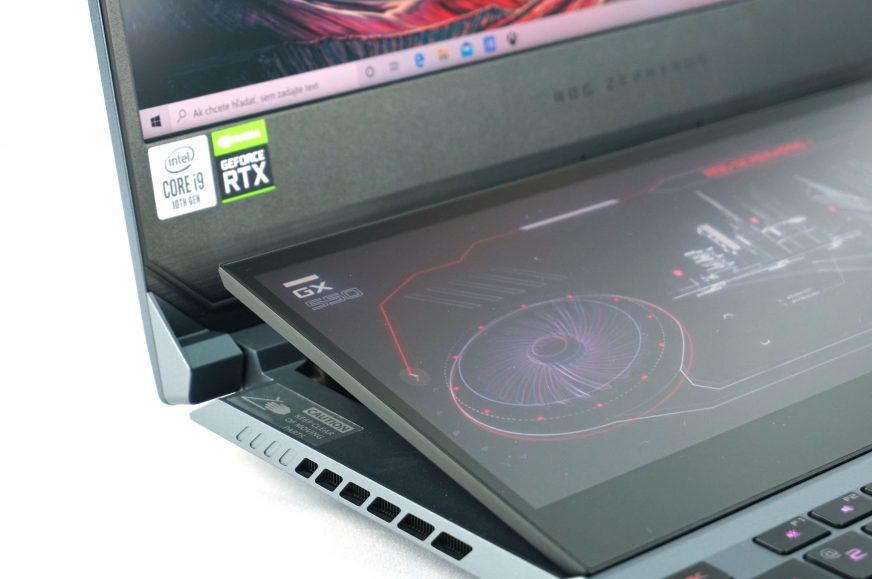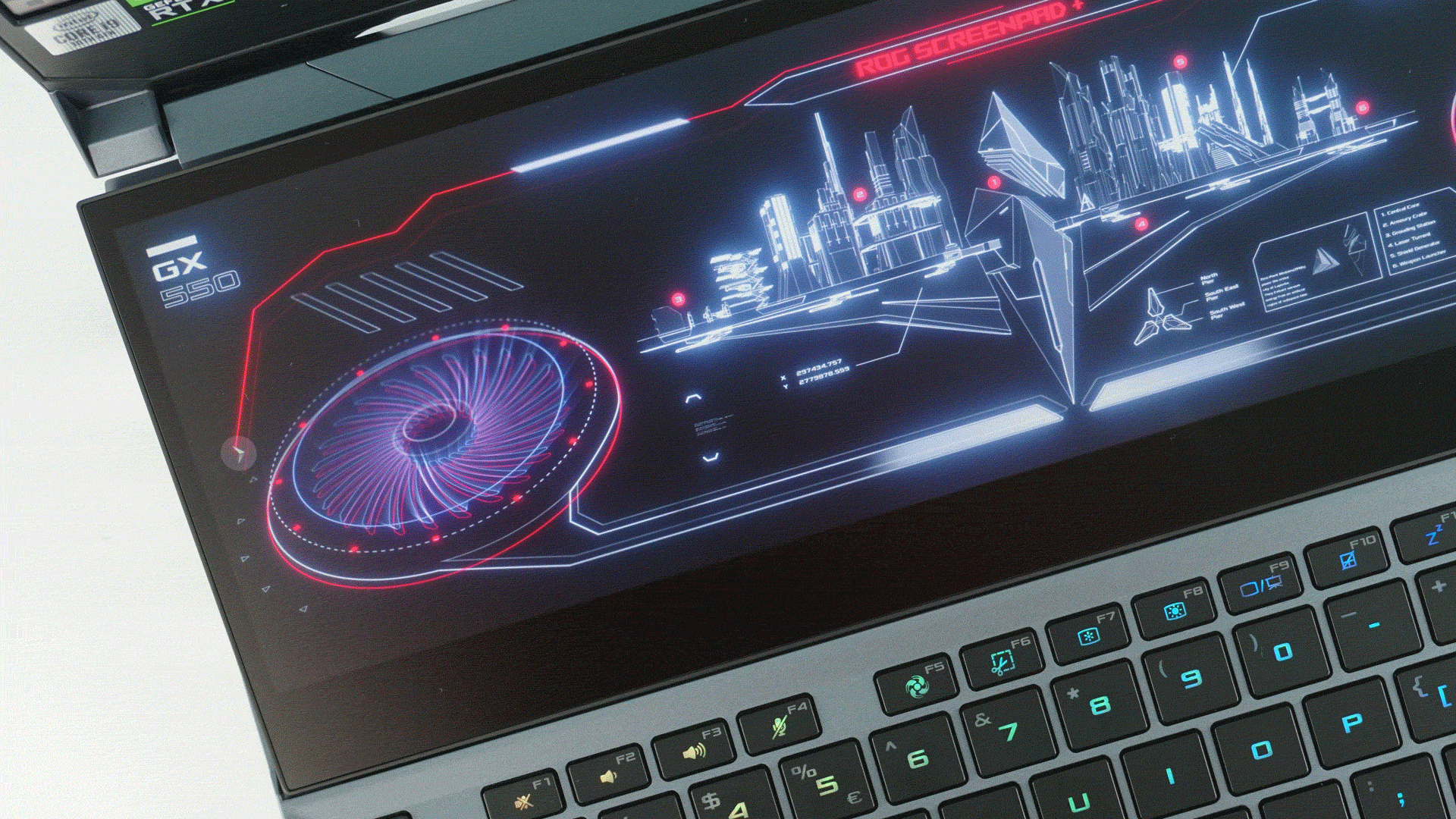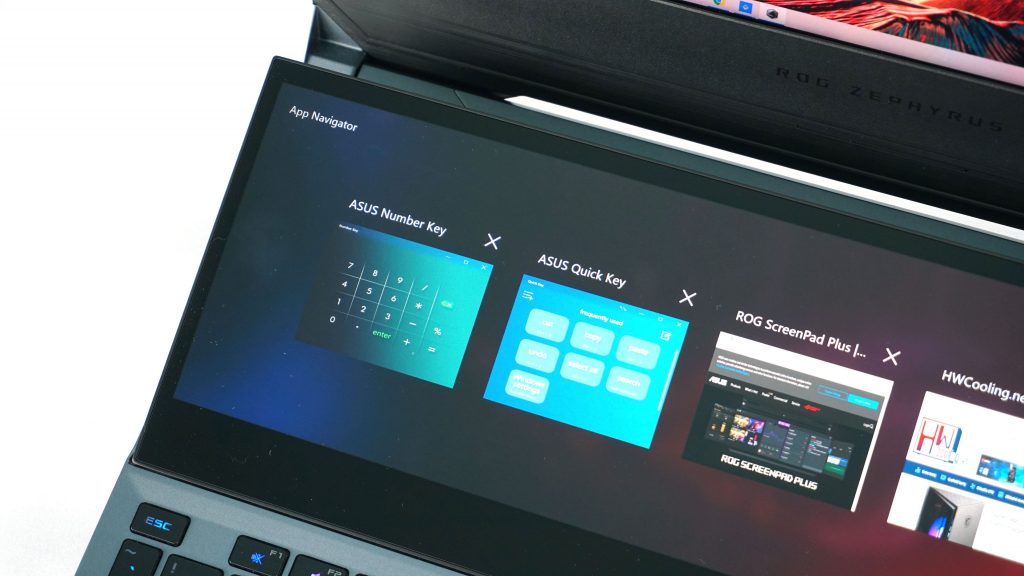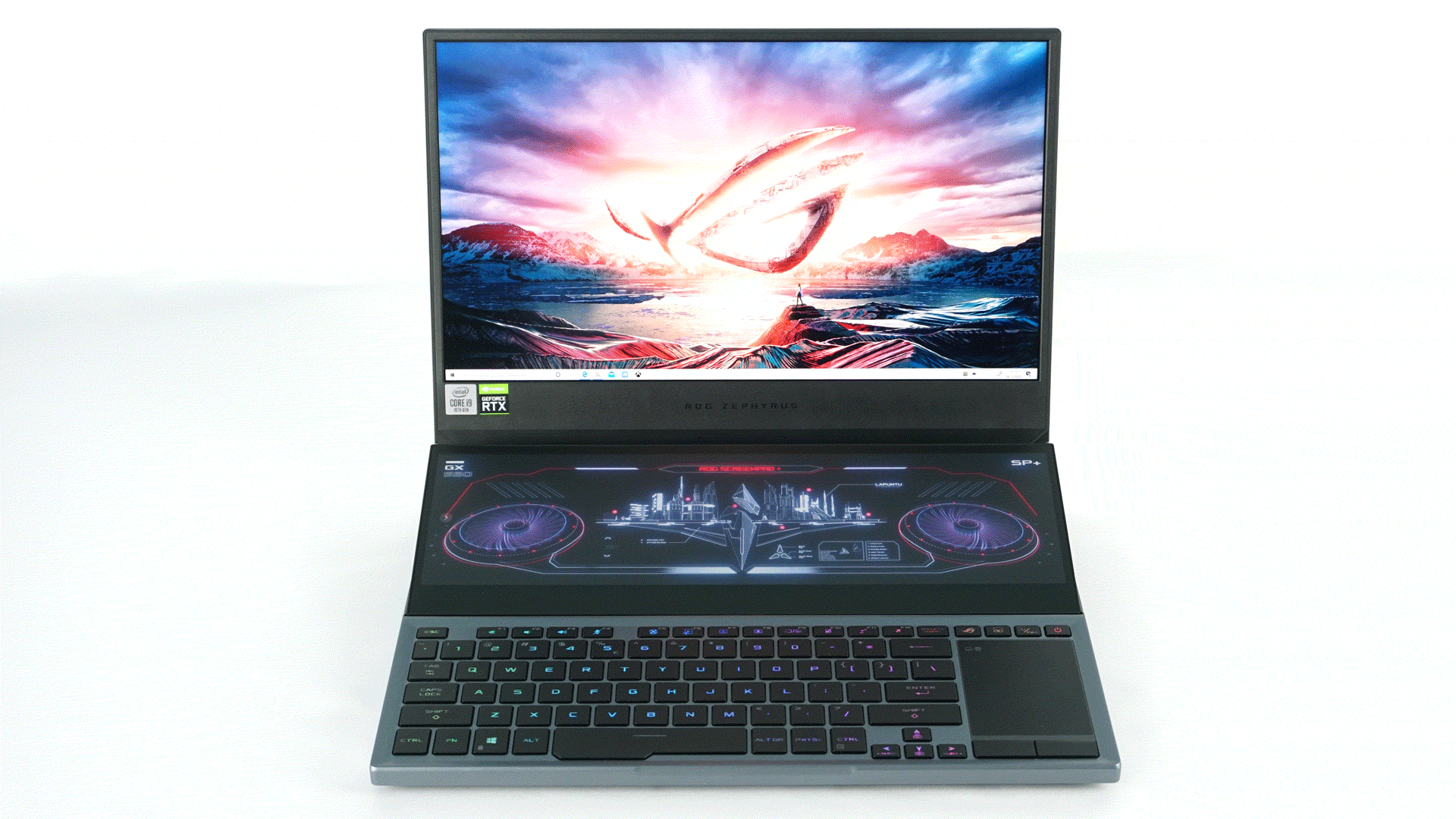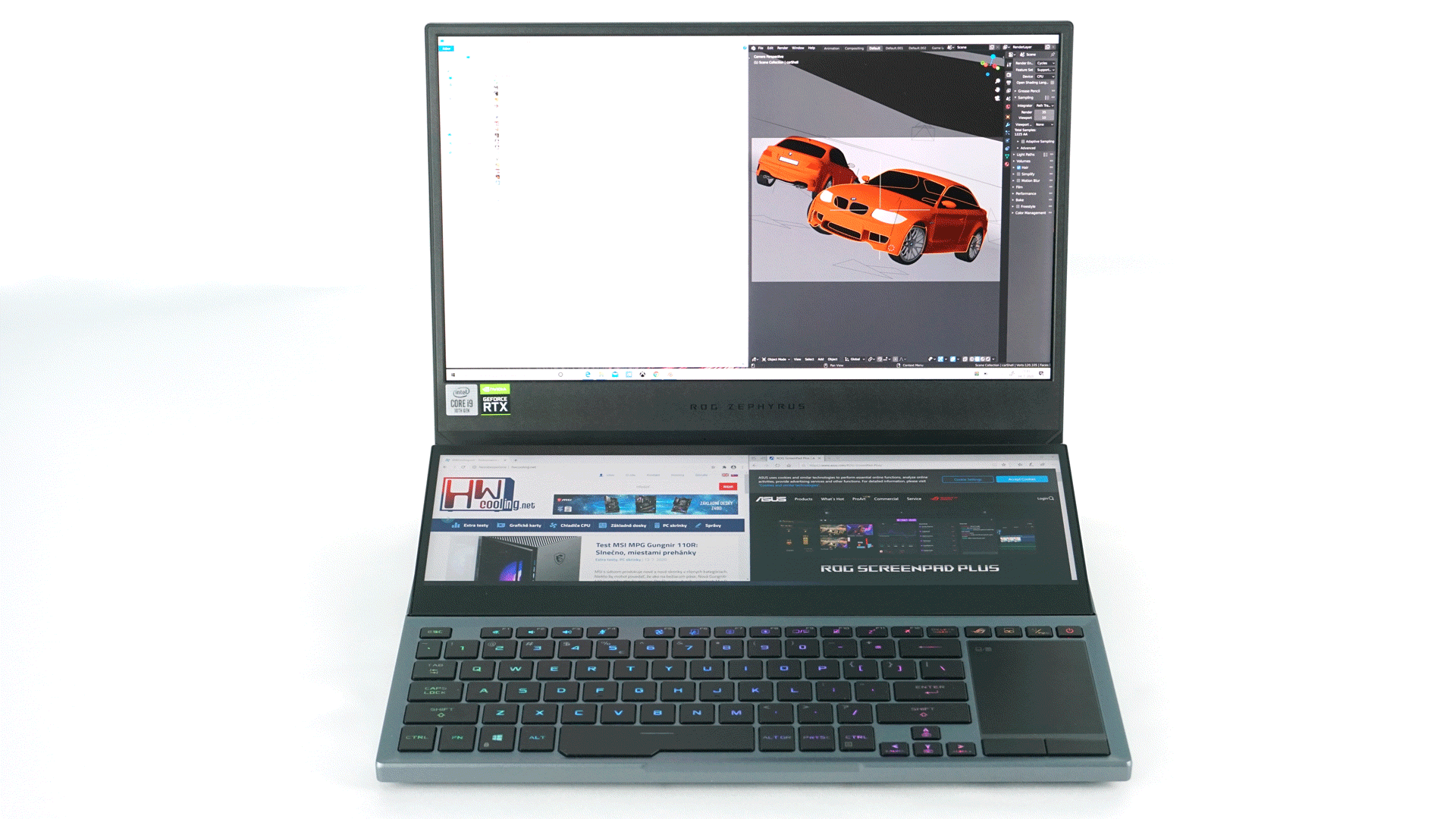ROG ScreenPad Plus
Asus ROG Zephyrus is a premium line of gaming laptops that merges maximum performance with unique design and functional solutions. The hallmark has always been the AAS which stands for cooling with a flexible portion of the bottom that would uplift the notebook a few mm. On the other side of the portfolio there are ZenBooks, where Pro Duo with two displays attracted our interest last year. A new flagship, that merges the best that the manufacturer can offer, is here.
ROG ScreenPad Plus
We’ve already seen the ScreenPad Plus secondary display with the ZenBook Pro Duo. It was a relatively large innovation in the field of laptops, as the secondary displays had been either tiny or laptops did not offer them at all. Asus decided to use the full width of the laptop and place a full-featured 4K display with an aspect ratio of 32:9 above the keyboard, which also added interesting features.
The ROG version of ScreenPad Plus offers a game design, but essentially the same functionality as on a ZenBook. The display is matte and touch sensitive, so you don’t have to worry about glare when looking from an angle.
You can take advantage of several built-in features such as a numeric keypad, quick shortcuts, or the ability to quickly split application windows in halves or thirds to create an efficient work layout.
You can have two browser windows on the main display and three other applications on the ScreenPad. You can then save such a layout in the so-called Task Group. This will allow you to bring up this layout by a simple press on the ScreenPad, and the applications you select will launch and lay out according to your preferences.
The traditional function of the ScreenPad is the ability to quickly move the application from the main screen to the secondary or vice versa and also expand to both screens at once.
There is also the ability to quickly swap content between displays using a single button in the ScreenPad menu.
ScreenPad brings interesting options and functions that will undoubtedly increase your productivity. However, I would appreciate it if the display offered more gaming features, let’s say the HP Omen X 2S had.
- Contents
- Parameters and details
- ROG ScreenPad Plus
- Testing methodology
- Rendering and Geekbench
- 3D/PC Mark and Unigine Heaven/Superposition
- Game tests – dedicated graphics
- End of part 1





